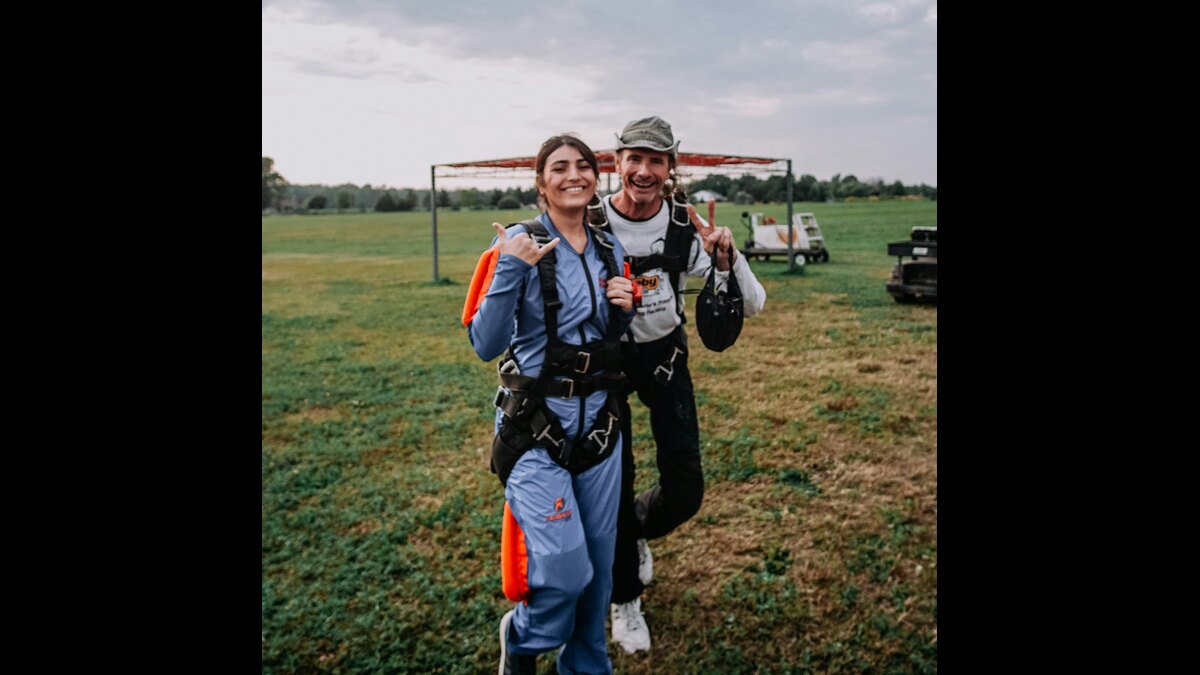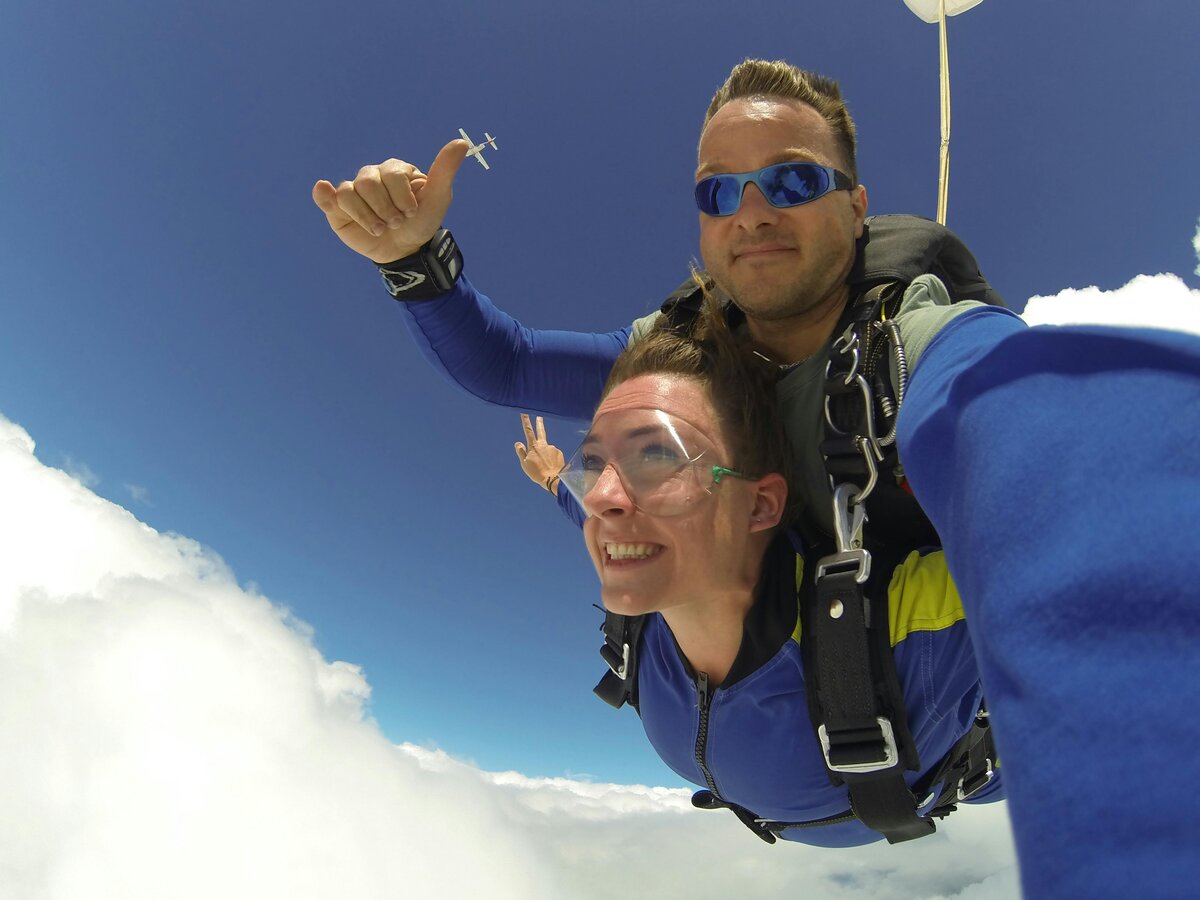Skydiving is an exciting adventure, but fear can hold you back. Many people feel scared before their first jump. This guide shares simple tips to overcome your fear of skydiving. You’ll learn how to build confidence and enjoy the thrill. Let’s dive into practical steps to make your first skydive unforgettable.
Understanding Your Skydiving Fears
Common Reasons People Fear Skydiving
Many people fear skydiving because it feels risky. The idea of jumping from a plane sounds scary. Some worry about heights or losing control. Others fear the unknown, like what freefall feels like. Knowing these fears helps you face them. Talking about them can make them less overwhelming.
Differentiating Acrophobia from Skydiving Anxiety
Acrophobia, or fear of heights, isn’t the same as skydiving anxiety. In skydiving, you’re so high up that the ground feels unreal. This makes the experience different from standing on a tall building. Skydiving fear often comes from the idea of jumping, not just heights. Understanding this difference calms your mind. You can focus on the jump, not the height.
How Fear Can Enhance the Skydiving Experience
A little fear can make skydiving more exciting. It pumps adrenaline, which sharpens your senses. This thrill is what makes skydiving fun. Embrace fear as part of the adventure. It can push you to feel alive during the jump. Channel it into excitement for a better experience.
Building Confidence Before Your Jump
Researching Skydiving Safety and Processes
Learning about skydiving safety eases your worries. Skydiving centers follow strict rules. Modern parachutes are very reliable. Instructors train for years to guide you safely. Read about how skydiving works to feel prepared. Knowledge reduces fear and builds trust.
Researching also helps you know what to expect. Watch videos of jumps to see the process. Read about skydiving centers’ safety records. Talk to staff about their training methods. This makes the experience feel familiar. You’ll feel more ready for your jump.
Mental Rehearsal Techniques for Success
Picture yourself skydiving successfully. Close your eyes and imagine boarding the plane. See yourself jumping and landing safely. This mental practice builds confidence. It makes the real jump feel less scary. Try this a few times before your jump day.
Mental rehearsal helps your brain get used to the idea. Imagine feeling calm during the jump. Picture smiling as you land. This tricks your mind into feeling prepared. Practice for a few minutes daily. It’s a simple way to boost courage.
Connecting with Others Who’ve Skydived
Talking to people who’ve skydived can inspire you. They share stories of how they overcame fear. Their excitement makes you feel eager. Ask them about their first jump. Hearing real experiences calms your nerves. It shows you that skydiving is doable.
Join online groups to connect with skydivers. Read their tips on forums or social media. Ask questions about what helped them. Many say the fear fades once you jump. Their stories motivate you to try it. You’ll feel less alone in your journey.
Why Tandem Skydiving is Ideal for First-Timers
Benefits of Jumping with a Professional
Tandem skydiving is perfect for beginners. You jump with a trained instructor who controls everything. This lets you focus on enjoying the experience. You don’t need to worry about the parachute. The instructor handles all the technical parts. It’s the easiest way to try skydiving.
This setup reduces fear because you’re not alone. Your instructor guides you through every step. They’ve done hundreds of jumps, so they know what to do. You feel safe knowing an expert is with you. Tandem jumps make skydiving less intimidating. You can relax and have fun.
How Instructors Guide You Through the Process
Instructors explain everything before your jump. They teach you how to position your body. They show you what to expect during freefall. Their calm attitude helps you stay relaxed. You can ask them any questions. Their support makes you feel ready.
During the jump, instructors stay in control. They tell you when to jump and how to land. They check the equipment to ensure safety. Their confidence rubs off on you. Knowing they’re in charge reduces your fear. You can trust them to guide you safely.
Safety Features of Tandem Skydiving Gear
Tandem skydiving gear is built for safety. The harness keeps you securely attached to your instructor. Parachutes have backup systems in case of issues. All equipment gets checked before every jump. This reliability helps you feel safe. You can focus on the thrill, not the gear.
Modern tandem systems are designed for two people. They’re tested to handle extra weight. Instructors inspect every part of the equipment. Safety standards are very high. Knowing this calms your worries. You can jump with confidence in the gear.

Techniques to Manage Skydiving Anxiety
Deep Breathing Exercises for Relaxation
Deep breathing calms your nerves before skydiving. Inhale slowly through your nose for four seconds. Hold it for four seconds, then exhale slowly. Repeat this a few times. It slows your heart rate and clears your mind. Practice this while waiting for your jump.
This technique works during the plane ride too. Focus on your breath to stay calm. It helps you avoid panic as you get closer to jumping. Breathing deeply feels simple but powerful. It keeps anxiety under control. You’ll feel more relaxed and ready.
Progressive Exposure to Skydiving Concepts
Start small to get comfortable with skydiving. Watch videos of jumps to see what happens. Visit a skydiving center to meet instructors. Try a wind tunnel to feel freefall. These steps make the real jump less scary. They build your confidence slowly.
Progressive exposure helps your brain adjust. Each step feels less overwhelming than jumping right away. Talk to others about their experiences. This makes skydiving feel familiar. By the time you jump, you’re more prepared. It’s a great way to ease fear.
Positive Affirmations to Boost Courage
Positive affirmations help you stay brave. Tell yourself, “I am strong and ready to skydive.” Repeat, “I trust my instructor and the equipment.” Say these phrases out loud or in your head. They build confidence and reduce doubt. Use them before and during your jump day.
Affirmations reframe your thoughts. Instead of focusing on fear, you focus on courage. Say, “I’ll feel amazing after this jump.” This shifts your mindset to excitement. Practice affirmations daily leading up to your skydive. They help you feel bold and ready.
Safety Measures That Build Trust
Parachute Technology and Backup Systems
Parachutes today are very safe. They’re made with strong materials to handle jumps. Every tandem parachute has a backup chute. This ensures you land safely if something goes wrong. Instructors check parachutes before every jump. Knowing this helps you trust the equipment.
Backup systems add extra safety. Automatic devices can open the parachute if needed. These systems are tested regularly. Skydiving centers follow strict safety rules. Learning about this technology calms your fears. You can jump knowing you’re protected.
Instructor Training and Certifications
Skydiving instructors train for years. They complete hundreds of jumps to get certified. They learn how to handle emergencies. Their skills keep you safe during the jump. You can rely on their experience. This makes skydiving feel less scary.
Instructors also take regular training courses. They stay updated on safety practices. Many have thousands of jumps under their belt. Ask about their certifications to feel confident. Their expertise helps you relax. You’re in good hands with a skilled instructor.
Skydiving Center Accreditation Standards
Good skydiving centers follow strict rules. They get accredited by groups like the US Parachute Association. This means they meet high safety standards. Their equipment and staff are checked regularly. Choosing an accredited center builds trust. You know they prioritize your safety.
Accredited centers train their staff well. They maintain their planes and gear carefully. You can ask about their safety records. This shows they’re serious about your experience. A trusted center makes you feel secure. It helps you focus on enjoying the jump.
Your First Skydive: A Step-by-Step Guide
What Happens During Pre-Jump Training
Before your jump, you get a short training session. Instructors explain how to jump and land safely. They teach you the right body position for freefall. You practice these moves on the ground. This training takes about 20-30 minutes. It helps you feel prepared and confident.
Training also covers what to expect in the air. Instructors show you the equipment and how it works. They answer any questions you have. This makes the process clear and simple. You’ll know exactly what to do. It reduces fear and builds excitement.
The Freefall and Landing Experience
Freefall feels like floating, not falling. It lasts about 30-60 seconds, depending on the height. You’re strapped to your instructor, who controls everything. The parachute opens, and you glide gently for a few minutes. Landing is soft, like stepping off a curb. The thrill is exciting, not scary.
During freefall, the wind rushes past you. It’s loud but exhilarating. Once the parachute opens, it’s calm and quiet. You can enjoy the view from above. Your instructor guides the landing smoothly. This experience turns fear into pure joy.
How to Savor the Post-Jump Adrenaline Rush
After landing, you’ll feel a rush of excitement. Your heart races, and you might feel unstoppable. Take a moment to soak it in. Smile, laugh, or even cheer. This adrenaline high is part of the fun. It’s proof you conquered your fear.
Share your excitement with others. Talk to your instructor or friends about the jump. Take photos to remember the moment. This helps you process the experience. The adrenaline rush can last for hours. It’s a reward for facing your fears.
Physical Preparation to Ease Skydiving Nerves
Basic Fitness Tips for Skydiving Comfort
You don’t need to be super fit to skydive. But staying active helps you feel ready. Simple exercises like walking or stretching improve your stamina. Being fit makes you feel stronger during the jump. It also calms your nerves. Try light workouts a few weeks before.
Focus on flexibility and core strength. These help you hold the right body position. A short daily walk or yoga session works well. Feeling good in your body boosts confidence. You’ll worry less about the physical side of skydiving. It’s an easy way to prepare.
Stretching Exercises to Reduce Tension
Stretching before your jump keeps you relaxed. Try simple stretches like touching your toes. Stretch your arms and shoulders to loosen up. This reduces physical tension from nerves. Do these stretches on jump day. They help you feel calm and ready.
Stretching also improves your body awareness. It helps you follow the instructor’s guidance. Spend 5-10 minutes stretching before training. Focus on your neck, back, and legs. This makes the jump feel easier. A relaxed body helps a relaxed mind.
How Physical Readiness Boosts Mental Confidence
Feeling strong makes you braver. When your body is ready, your mind follows. Exercise reduces stress hormones that fuel fear. Even light activity like jogging helps. You’ll feel more in control during the jump. Physical prep is a simple confidence booster.
Regular movement builds mental toughness too. Try a quick workout routine before your jump day. It could be a brisk walk or some jumping jacks. This energy lift makes you feel capable. You’ll face skydiving with less doubt. Your body and mind work together to beat fear.
Leveraging Community Support to Overcome Fear
Joining Skydiving Forums or Groups
Online skydiving groups are great for support. Join forums or social media pages for skydivers. Read stories from others who were scared. Their tips can inspire you. You’ll see that fear is normal. It makes you feel ready to join them.
These groups let you ask questions. People share advice on handling nerves. They post about their first jumps. This builds your excitement and confidence. Connect with a group before your jump. It’s like having a team cheering you on.
Learning from Others’ First-Jump Stories
First-jump stories show you what’s possible. Many skydivers were nervous at first. They share how they pushed through fear. Reading these stories makes skydiving feel real. You’ll believe you can do it too. Look for blogs or videos online.
Ask friends or family who’ve skydived. Their experiences feel personal and relatable. They might tell you how they felt scared but loved it. This motivates you to try it. Stories turn fear into a challenge you can beat. They make the jump seem fun, not scary.
Building a Support Network for Your Jump
A support network helps you stay brave. Tell friends or family about your skydiving plan. Their encouragement keeps you motivated. Bring a friend to the skydiving center. Their presence calms your nerves. You’ll feel stronger with people rooting for you.
Your network can include instructors too. Talk to them about your fears. They’ll share tips and reassure you. Having supportive people around makes a big difference. You won’t feel alone in your journey. Their cheers help you jump with confidence.
Conclusion
Skydiving is a thrilling adventure that anyone can enjoy with the right mindset. Overcoming the fear of skydiving starts with preparation and trust in safety measures. Use breathing, visualization, and community support to build courage. Your first jump will feel like a huge win. The adrenaline rush and pride are worth facing your fears. Book your skydive today and embrace the thrill. You’ll discover a braver version of yourself!




